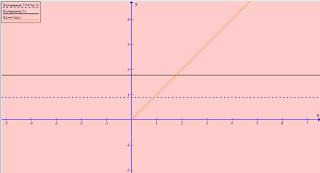problem involves figuring how zeros are identified, although
testing to replicate was pretty cool.
It is bothersome to wonder when one knows that an indefinite
unrolling of decimals gets to be called a zero. Riemann himself
apparently found three zero thanks to a formula that uses sign changes
and the presence of primes, the Riemann-Siegel formula (Siegel
1896-1981, found it in his papers). There was an earlier approach by Euler
that compares a sum of series to results through integration, which
seems sensible.
Long story short, I need to up my level of competence yet again.
* * *
Been learning to better appreciate the gamma function by reading
about it (in translation) on Russian Wikipedia. Because it is a
function of the complex plane, one cannot graph it properly in
2-D. In a normal Cartesian function, an x creates a y. In a complex
situation, a real and an imaginary create a real and an imaginary: too
much information...
Below, a 3-D rendering of the gamma function, with standard x and y
on the floor, and the resulting transformation on the z-axis. The negative
integers on the x(reals) are active, but on the positive side, things happen at
.5.
One can recognize below, in olive green, the beta function which, in this form,
is a mere extension of the factorial function (calculated from an integral). It
becomes an extension of the zeta function to between 0 and 1 when multiplied
by its x position, mathematically e^ln(x). So .5*gamma(.5) yields zeta(.5).
Interestingly, gamma(.5) at 1.772 is the square root of pi. Zeta(.5) comes in at
half of that at .8862. Zeta(.5 + i) is something else again, on the complex plane.
* * *
from South Korea is viral.




No comments:
Post a Comment